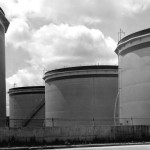WTI and Brent prices rose during midday trade in Europe today, as investors weighed US oil inventories and developments over the crisis in Ukraine. Meanwhile, natural gas futures were higher as the US posted weekly natgas storage readings.
WTI for September delivery traded at $97.08 per barrel at 14:19 GMT on the NYMEX today, up 0.17%. Prices ranged from a seven-month low of $96.55 to $97.43 per barrel. The contract dropped 0.47% yesterday for a weekly loss of about 1%.
Meanwhile, September Brent on the ICE stood at $105.10 per barrel, up 0.49%. Daily low and high were $104.16 and $105.22 per barrel, respectively. Brent’s premium to WTI was at $8.02, after Wednesday’s closing margin of $7.67. The European benchmark was little changed yesterday, and was down some 0.3% for the week.
“Market participants are overestimating the current level of oversupply on the market, while at the same time underestimating the risks of future production outages,” Carsten Fritsch, an analyst at Commerzbank AG in Frankfurt, said in a report.
The US Department of Energy’s statistical arm, the Energy Information Administration (EIA) posted its weekly report on US oil inventories yesterday. The log covers the week through August 1, and revealed a 1.8 million-barrel draw for crude stockpiles, levels dropping to the lowest since late February. Gasoline stocks lost 4.4 million barrels, while distillate fuels, which include diesel and heating oil, were down 1.8 million barrels.
“The magnitude of the [gasoline stocks] drop was certainly more than the market was anticipating,” Tim Evans, analyst at Citi Futures Perspective, said for the Wall Street Journal. “It does certainly look like demand has picked up.”
Russian countermeasures
Russian Prime Minister Dmitry Medvedev announced Moscow would be introducing its counter-sanctions in retaliation to the West’s measures. Mr Medvedev said Russia is banning all food imports from the EU, US, Norway, Canada and Australia for a period of one year. This includes meat, fish, daily products, food and vegetables. The imports are valued at more than €10 billion annually.
“We are seeing a bit of disinterest on the crude side with respect to the Ukrainian conflict,” Mark Keenan, head of commodities research in Asia at Societe Generale, said for Reuters before the counter-sanctions were announced.
Meanwhile, NATO supported earlier remarks made by Radoslaw Sikorski, Polish Foreign Minister, saying that Russia has amassed more than 20 000 combat-ready troops near the border with Ukraine, who are capable of invading. Moscow claims there will be exercises taking place there, though it is widely seen as a show of force, coming at a time when the Ukrainian military score advances against the pro-Russian separatists.
Heavy fighting was reported in Donetsk, a rebel bastion, while earlier on Wednesday two civilians were reported killed in Luhansk, the other major separatist stronghold, the BBC reported.
Natural gas
Natural gas futures for September on the NYMEX were up 0.99% to trade at $3.972 per million British thermal units (mBtu) at 14:38 GMT. Prices ranged from $3.922 to a three-week high of $3.981 per mBtu. The contract added 0.92% yesterday for a total increase of about 3.5% for the week.
The US Energy Information Administration (EIA) posted its weekly reading on US natgas storage levels. The report revealed a build of 82 billion cubic feet (Bcf), in line with expectations, and compares to a 49 Bcf average gain for the past five years.
“There will be abundant much colder than normal Canadian air lurking just across the border from August 15 through August 21,” analysts at NatGasWeather.com, who correctly projected this weeks gain, said in a note to clients. “Moderately bearish weather and EIA builds continue.”
Meanwhile, output from the Marcellus shale in the Northeast topped 15 bcf per day this month, with more capacity being added in August.
“Production in the Marcellus Region surpassed winter demand for natural gas in Pennsylvania and West Virginia several years ago and is now on track to be enough to equal the demand in those states plus New York, New Jersey, Delaware, Maryland, and Virginia combined,” the EIA said.





